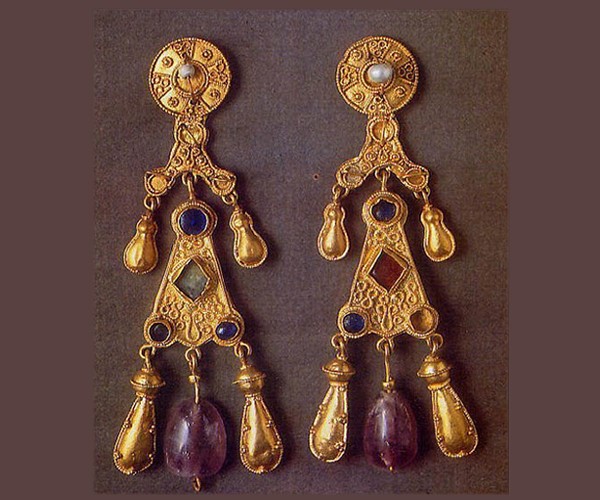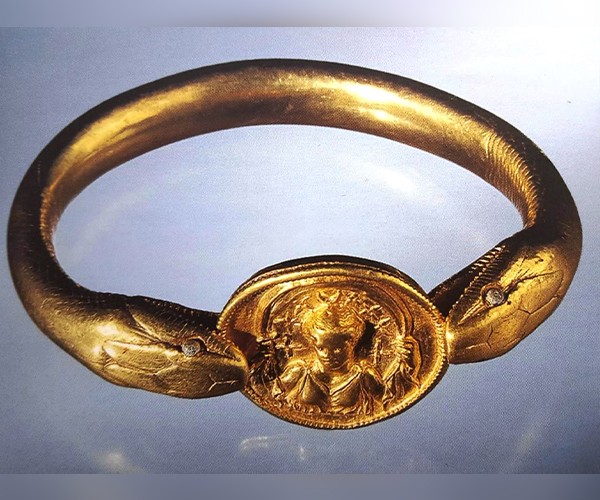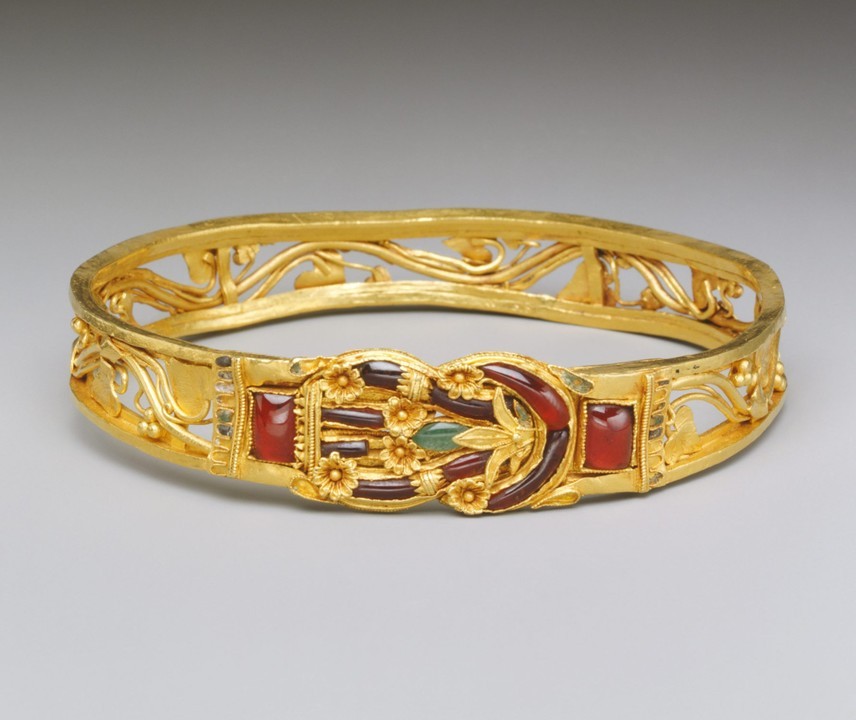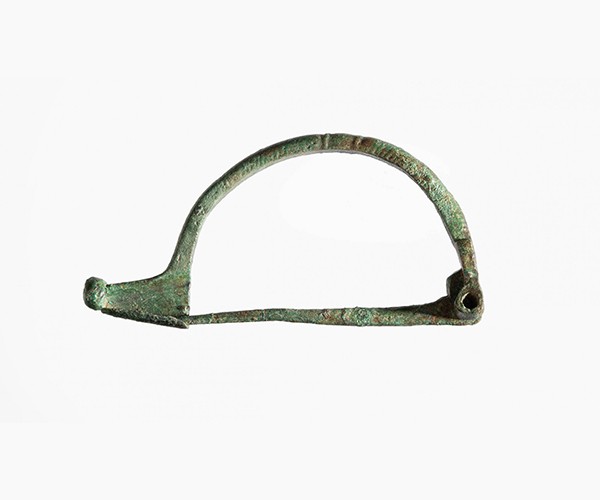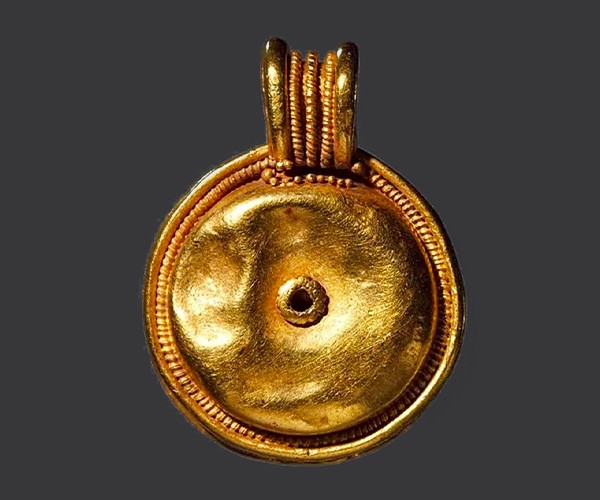Roman Jewelry: from Engagement Rings to Imperial Crowns
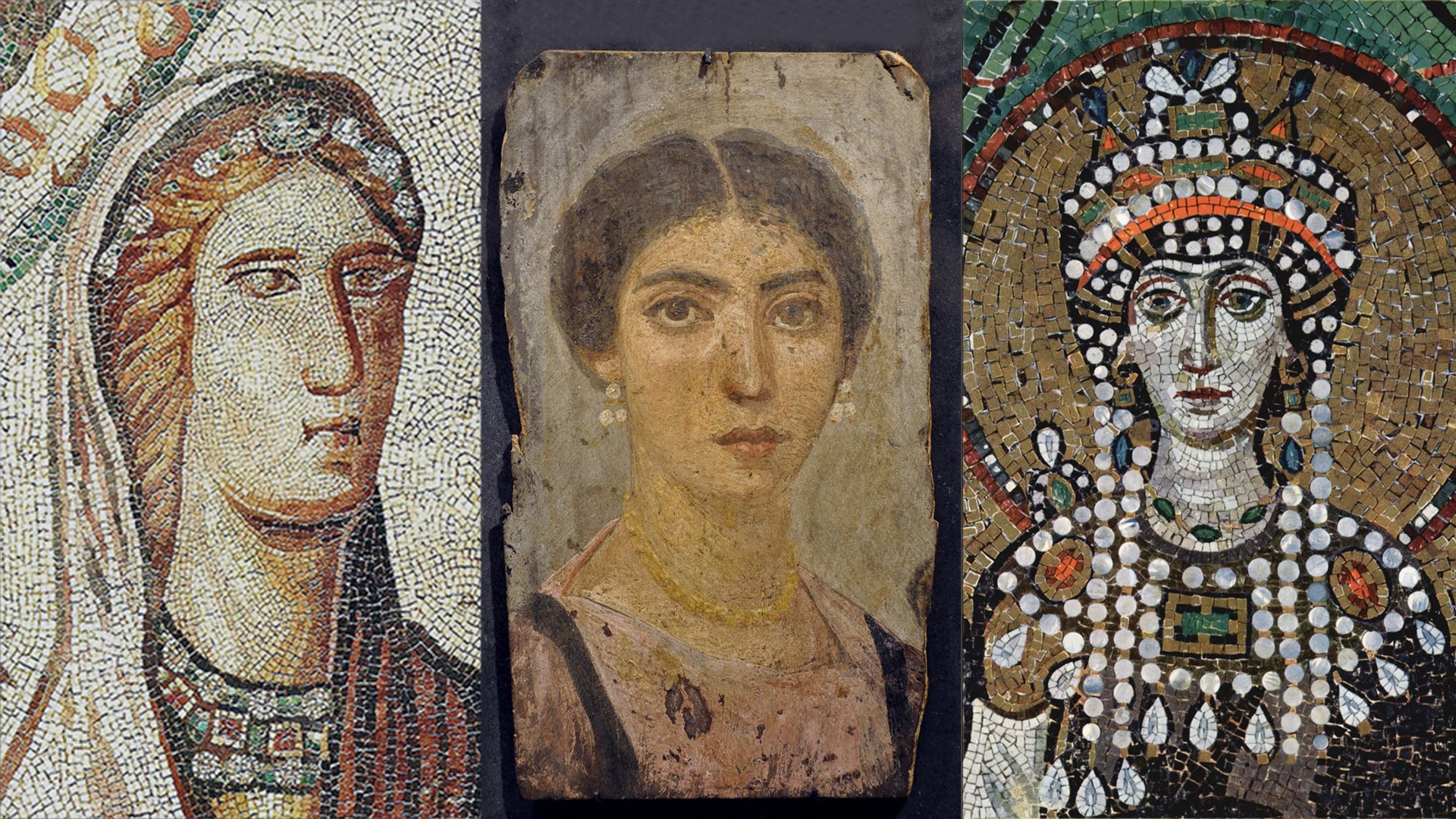
In the history of goldsmithing, the ancient Romans are credited with inventing the engagement ring, but the importance of Roman jewelry is not limited to this. Although, at least initially, less refined and elaborate than Greek and Etruscan jewelry, even in ancient Rome precious ornaments were important accessories that indicated the social status of the wearer and to which magical powers were often attributed.
Ancient Roman Jewelry, from Simplicity to the Luxury of Precious Stones
The Sober Ornaments of the Republican Era
In the early centuries, until the end of the Republican era (between 500 and 27 BC), the goldsmith’s art did not have great development in ancient Rome. Roman tradition and customs, in fact, were inspired by principles of simplicity and sobriety and opposed everything that could suggest luxury and splendor, such as refined Greek jewelry. Although Roman craftsmen had learned goldsmithing techniques from the Etruscans, who were masters in granulation, chasing and filigree creation, Roman jewelry was much more linear and simple. More than for ornament, in fact, the ornaments were worn as amulets, to protect against evil spirits and to attract good fortune. Among these, many were pendants, such as the bulla, which every family put around the necks of their male children immediately after birth and which was often made of lead covered with a sheet of gold; children wore it until age 16, the age of majority. Girls and young women, instead, until marriage wore the lunula, which had the shape of a crescent moon and was believed to favor fertility.
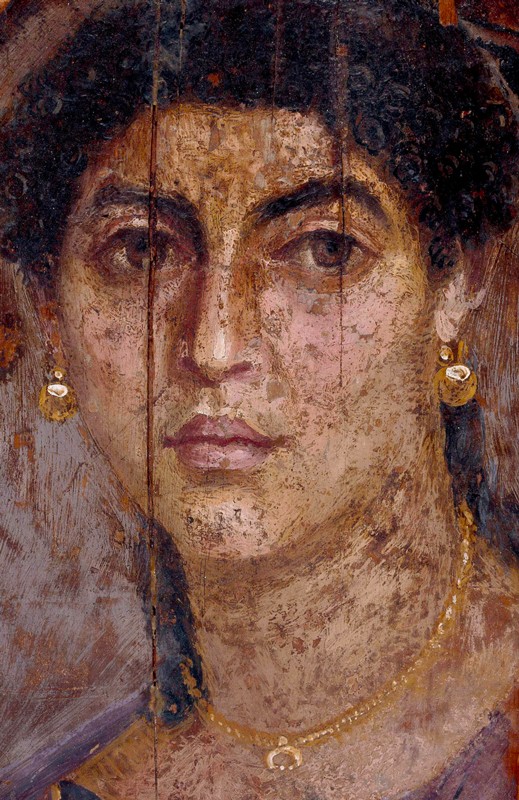
The Sumptuous Roman Jewelry of the Imperial Era
From the 1st century AD, the expansion of the empire brought the Romans into contact with new peoples and new traditions, particularly those from the East, which were much more inclined toward luxury and refinement. Like many other aspects of Roman culture, the goldsmith’s art also underwent this influence and Roman jewelry became much more luxurious. The forms became more complex and elaborate and new metals and precious stones began to be used more frequently, such as emeralds, sapphires, diamonds and amethysts, which came from the lands of the East. The most prized gems were pearls, considered the most precious and refined. Jewelry thus became a symbol of wealth and social status, for both men and women.
The goldsmith artisans of ancient Rome became important and gathered in guilds. Evidence of this is the frieze of the famous House of the Vettii in Pompeii, discovered by the excavations that brought to light the city buried by the eruption of Vesuvius in 79 AD. The frieze shows a long series of Cupids (the personification of the god Cupid in the form of a winged child) engaged in various trades, including that of the goldsmith.
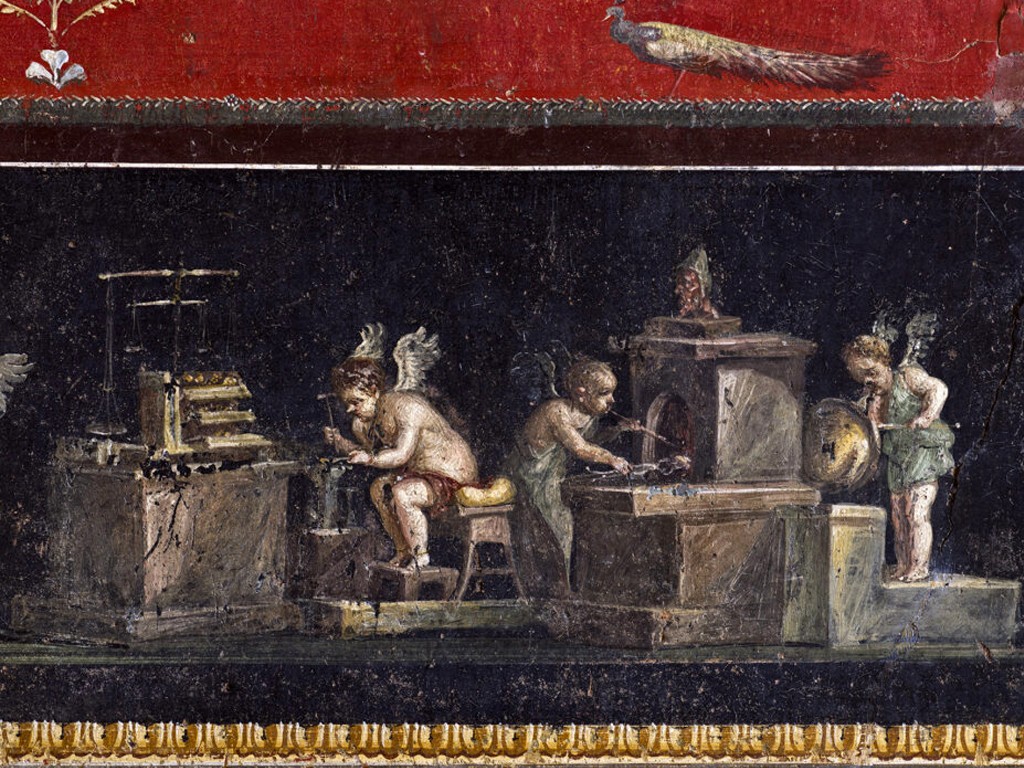
House of the Vettii
Rings, Bracelets and Fibulae: Jewelry in Ancient Rome for Men and Women
As we have said, it was the ancient Romans who invented the engagement ring and also the wedding ring. The first was called anulus pronubus and was the promise of marriage, the second vinculum and was exchanged during the wedding. Both were worn on the left ring finger, because it was believed that the vena amoris (vein of love) passed through there, connected to the heart. Among Roman jewelry, rings were the most appreciated: senators, since the time of the Republic, wore a gold one as a symbol of power. Often men wore rings with gems or with the family coat of arms engraved, to be used as a seal.
Earrings (in Latin inaures) were instead the primary ornament for women, who wore them from childhood, together with a small gold ring, often passed down from mother to daughter. Women also wore the buccola, a circular bracelet worn on the arm, and precious clasps in their hair. Jewelry was one of the few personal properties of Roman women.
Bracelets were also used for the wrists, which often had the shape of a serpent, considered a symbol of immortality and therefore of good omen.
Men and women also wore fibulae, that is, the brooches that held their clothes closed. Born for a functional purpose, over time they became true jewelry, often made of gold and precious stones and with elaborate decorations.
Finally, among the jewelry of ancient Rome one cannot forget the laurel crown, which reproduced in gold two intertwined laurel branches. It was first used by Julius Caesar and from then on became the symbolic crown of Roman emperors.
